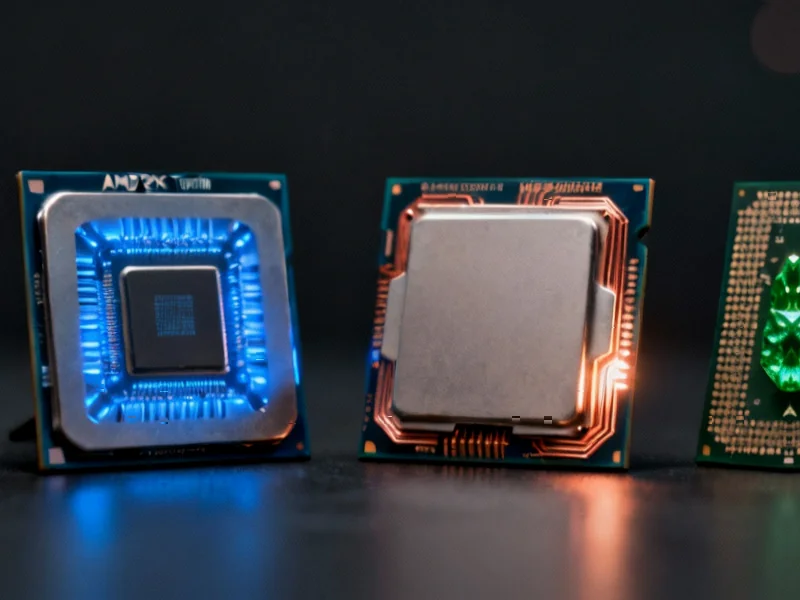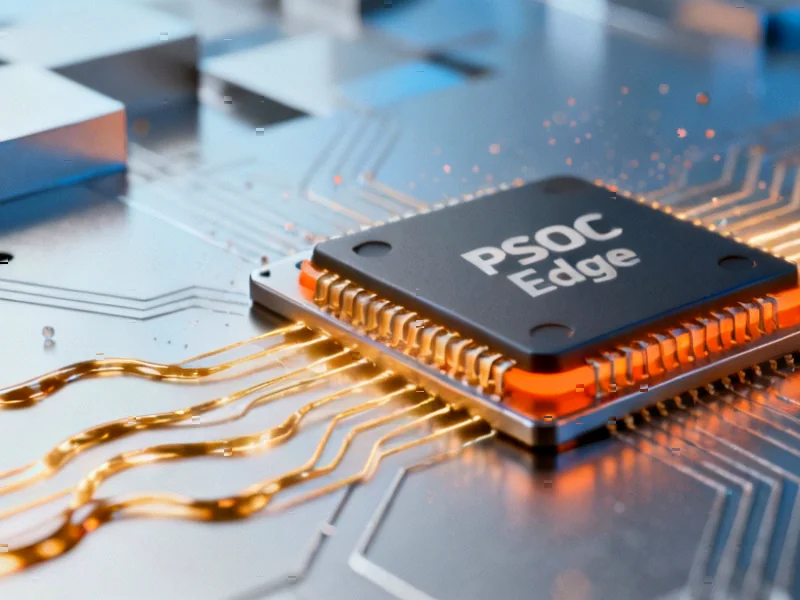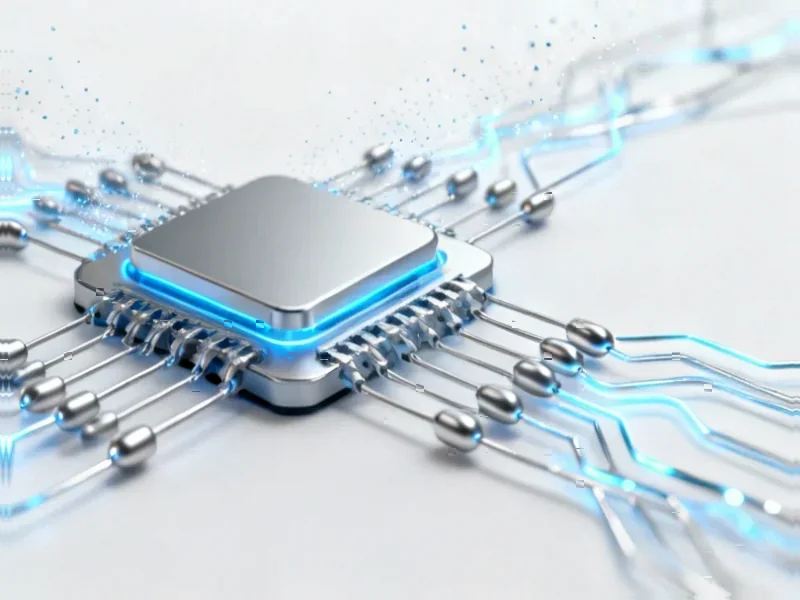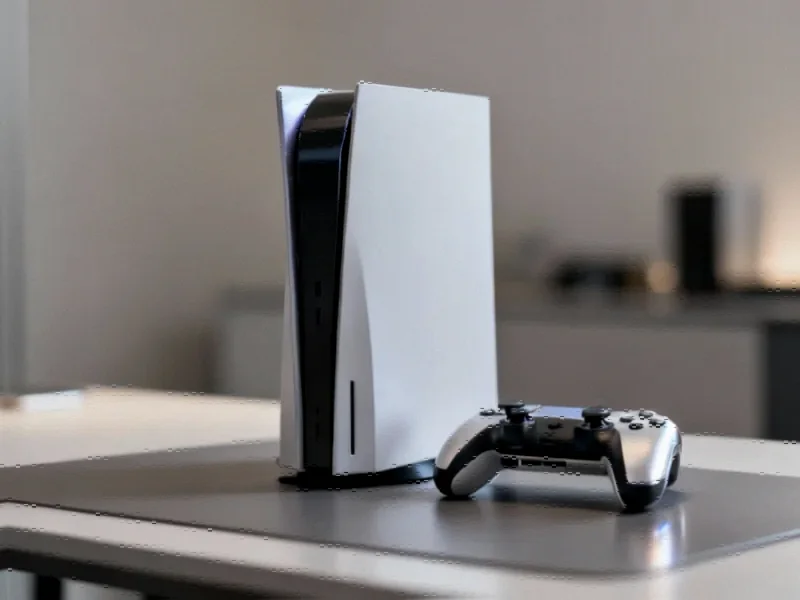TITLE: AMD Turin, Intel Granite Rapids, Graviton4 Face Off in AWS Cloud Benchmark Battle
META_DESCRIPTION: New AWS M8 instance benchmarks reveal performance and cost differences between AMD EPYC Turin, Intel Xeon 6 Granite Rapids, and AWS Graviton4 processors.
EXCERPT: Amazon’s latest M8 cloud instances featuring AMD’s EPYC Turin, Intel’s Xeon 6 Granite Rapids, and AWS’s Graviton4 processors have undergone extensive performance testing. The benchmarks provide crucial insights into how these competing architectures stack up in real-world cloud workloads with identical configurations across 140+ tests.
Cloud Computing’s Latest CPU Showdown
Amazon Web Services has quietly escalated the cloud computing arms race with its latest M8 instance family, creating what industry observers are calling one of the most interesting processor competitions in recent memory. According to recent benchmark analysis, the cloud giant now offers customers three distinct architectural paths: AMD’s EPYC Turin, Intel’s Xeon 6 Granite Rapids, and AWS’s own Graviton4 processors, all available in the same instance class.
Table of Contents
The timing couldn’t be more significant. With enterprises increasingly focused on cloud cost optimization amid economic pressures, these performance comparisons carry real weight for IT decision-makers. What makes this particular face-off compelling, sources indicate, is that all three processors represent their respective companies’ latest server architectures competing head-to-head in the same cloud environment.
Testing Methodology and Configuration Details
Independent testing reportedly used identical 4xlarge instance sizes across all three platforms, providing 16 vCPUs and 64GB of RAM for each configuration. This level playing field approach, running Ubuntu 24.04 LTS with consistent software stacks, offers what analysts describe as one of the cleanest architectural comparisons available in the cloud space.
Notably, the testing revealed important architectural differences beneath the surface. The AMD m8a instances apparently use all physical cores without simultaneous multithreading, while the Intel M8i instances achieve their vCPU count through a combination of physical cores and Hyper-Threading. This distinction could influence performance in threaded workloads, according to industry experts familiar with the architectures.
Meanwhile, AWS’s Graviton4 continues the company’s strategic push toward Arm-based computing with its Neoverse-V2 cores. The in-house processor represents Amazon’s growing confidence in its silicon design capabilities and its desire to control more of the cloud technology stack.
Performance Meets Economics
Perhaps the most telling aspect of the analysis comes from the pricing structure. Reports show the Graviton4 instances carrying the lowest on-demand price at $0.718 per hour, followed by Intel’s Granite Rapids at $0.847, with AMD’s Turin commanding the premium position at $0.974 per hour. This pricing spread creates an interesting value proposition calculation for cloud customers.
Industry watchers suggest the pricing strategy reflects both manufacturing costs and competitive positioning. AMD’s higher price point, according to some analysts, may indicate confidence in Turin’s performance capabilities, while AWS’s aggressive Graviton4 pricing appears designed to drive adoption of their proprietary architecture.
The extensive benchmarking—reportedly covering over 140 different tests—provides a comprehensive view of how these processors handle diverse workloads. From computational tasks to memory-intensive operations, the results should give enterprises clearer guidance on which instance type makes sense for their specific applications.
Strategic Implications for Cloud Computing
This three-way competition represents more than just another performance comparison. It signals a fundamental shift in the cloud infrastructure landscape where customers now have meaningful architectural choices beyond the traditional x86 duopoly. The emergence of viable Arm-based alternatives through Amazon Web Services own silicon adds another layer to an already complex decision matrix.
For Intel, the Granite Rapids performance in these tests could be crucial for maintaining their position in the data center market. The company has faced increased competition from both AMD’s EPYC lineup and custom silicon from cloud providers. Similarly, AMD’s Turin represents their latest attempt to build on the momentum they’ve gained in recent server processor generations.
What remains unclear is how these benchmark results will translate to real-world enterprise workloads. Performance characteristics can vary significantly depending on application types, and the optimal choice may differ organization by organization. However, the availability of such direct comparisons through Amazon EC2 instances gives customers unprecedented visibility into the performance-cost tradeoffs.
As cloud computing continues to evolve, these processor competitions are likely to intensify. With all three companies investing heavily in their next-generation architectures, customers stand to benefit from both performance improvements and potentially more competitive pricing. The real winners may be enterprises that can strategically leverage these different instance types based on their specific workload requirements.
Related Articles You May Find Interesting
- OpenAI Enhances ChatGPT with Advanced Workplace Data Search Capabilities
- Microsoft Edge Enhances Autofill with User-Controlled Saving Feature
- Boneless Insects Possess Sophisticated Calcium Control System, Groundbreaking Study Reveals
- Deep Learning Model Predicts Severe Water Scarcity in Bangladesh’s Agricultural Heartland
- Anthropic Secures Massive Google Cloud AI Compute Deal



